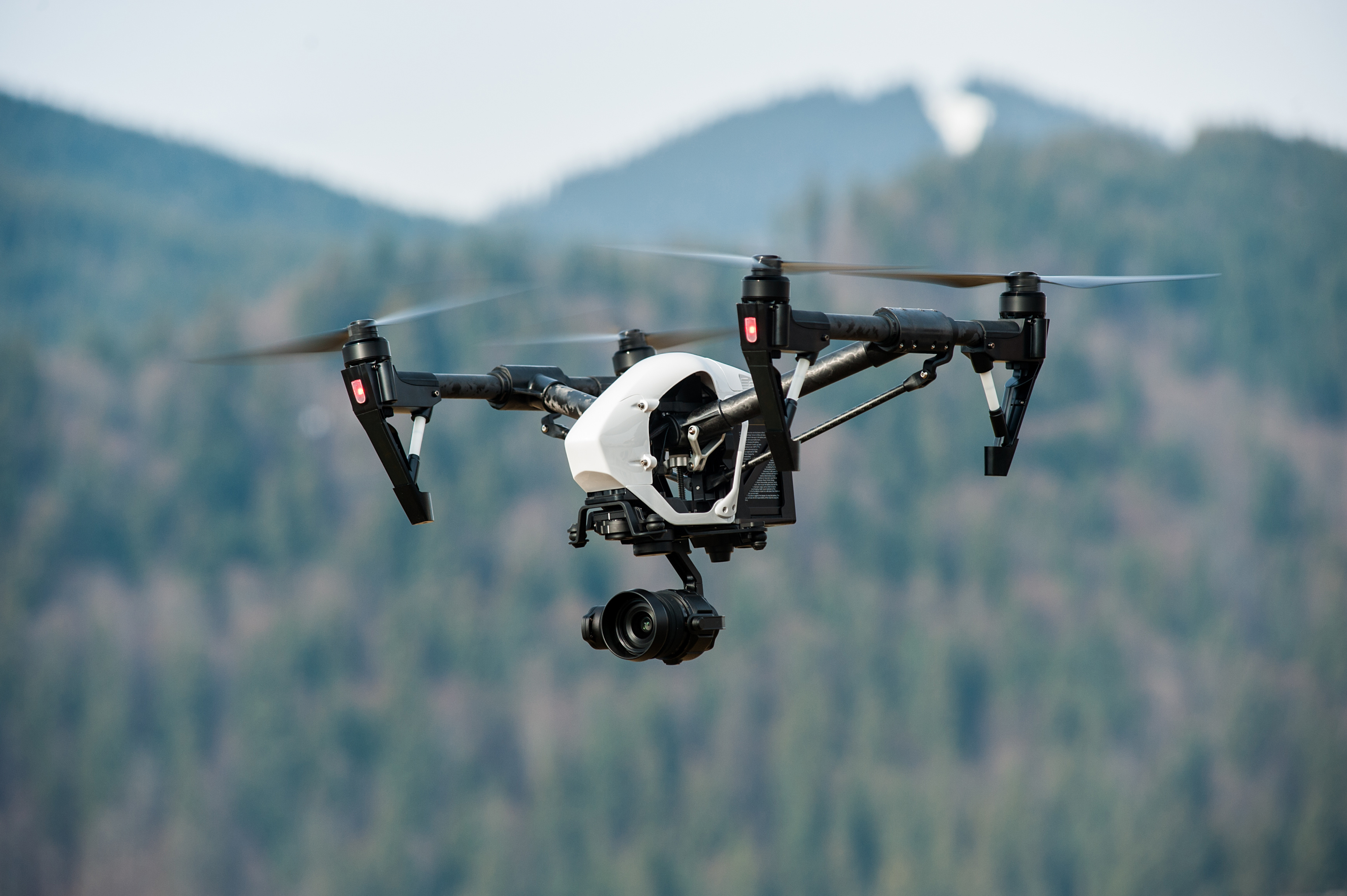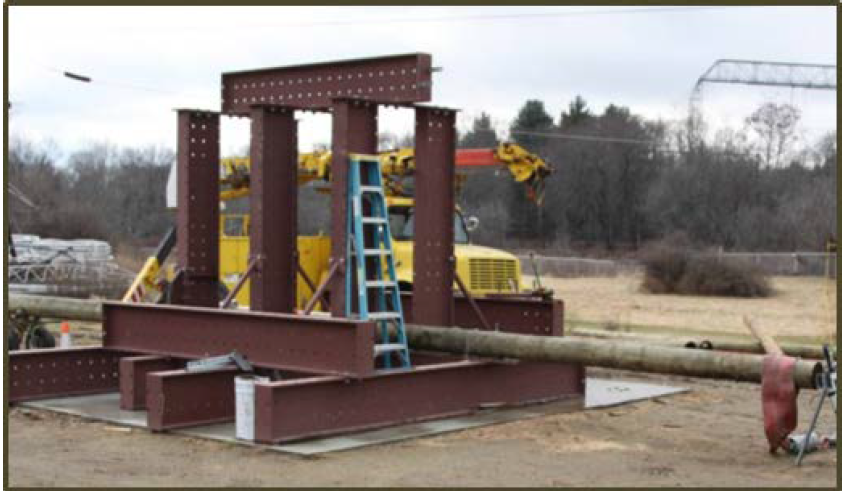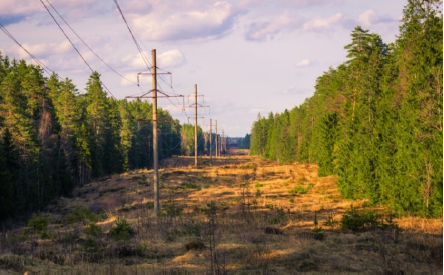Project Description
Key Research Question
Managers of overhead distribution systems are frequently challenged to improve system performance, manage a fleet of aging assets, and deploy new technology that is expected to perform for decades. Emerging technologies can offer opportunities to improve performance, but utilities lack objective performance assessments. Because total replacement of aged assets is impractical, utilities must strategically plan resources to best maintain system reliability while promoting safety, reliability, and environmental stewardship. The Overhead Assets project investigates new designs and approaches for overhead assets, asset degradation and failure, inspection methods, and emerging technologies to enhance component reliability, longevity, and cost-effectiveness. Asset managers can use the test data generated by the research to make informed decisions about selection, installation, inspection, maintenance, and replacement.
Objective
This research investigates overhead asset performance through application of well-documented and repeatable performance and aging tests. Asset managers can use test results to make effective asset decisions over an asset’s life cycle. Application of this information can:
- Enhance procurement equipment specifications
- Inform asset selection and installation
- Enable effective application of inspection technology
- Inform inspection and maintenance cycles
This project also intends to capture and document knowledge regarding overhead asset design and application. This material could be incorporated into guides, videos, and other training material for utilities.
Planned 2024 Research
This project conducts material and structure testing, evaluates inspection tools and technologies, and documents leading practices to inform overhead asset life-cycle decisions. The 2023 project includes the following tasks:

Resilient Structure Design: In 2024, this task plans to develop a means of assessing the ability of a structure to dissipate impact loads, such as those created during tree strikes or when neighboring structures fail, i.e., cascading failures. Research results could help utilities develop new resilient standards.

Alternative Pole and Crossarm Material Evaluation: This task examines the short- and long-term performance of alternative pole and crossarm materials, such as composites, steel, ductile iron, and concrete. In 2024, this task plans to investigate the short- and long-term performance of existing and emerging concrete pole materials.

Grounding and Lightning Performance: This task examines the application and performance of grounding systems and lightning protection approaches. In 2024, this task plans to evaluate additional conductive backfill options. This task also plans to evaluate a new surge arrester design intended to protect distribution lines in rocky areas with poor grounding.

Overhead Connector Performance Testing: Connectors are a common source of overhead line interruptions. This task tests the electrical and mechanical performance of connectors under varying load and/or environmental conditions. In 2024, this task plans to test piercing secondary connectors.

Assessment of Conductor Performance and Emerging Materials: Accelerating electrification, including increasing use of electric vehicles, will require conductors to carry more current, necessitating reconductoring with larger conductors and potentially upgrading structures to support increased conductor weight and wind loads. Newer high-temperature, low-sag (HTLS) conductors are one option that utilities could employ to enable higher line capacity while maintaining existing conductor weight. This task will review HTLS conductor and other technology options to increase line capacity.

Evaluation of Emerging Transformer Technologies: Pole-top transformers and voltage regulator designs have remained relatively unchanged for decades. Modern insulation materials could improve the thermal characteristics and environmental friendliness and reduce flammability compared to traditional oils. In 2024, this task plans to evaluate cast-resin insulated, medium-voltage pole-top transformers.

Evaluation of Pole Inspection Technologies: Pole condition assessment provides a means of prioritizing pole replacement to better optimize O&M budgets. This task investigates tools used to assess the health of poles made from wood or other materials. In 2024, this task will investigate inspection technologies for composite poles. Approaches could include comparing inspection results collected using potential technologies with remaining strength data collected through destructive laboratory testing.

Online Condition Monitoring and Inspection of Overhead Systems: As sensor capabilities increase and costs decrease, utilities are looking to leverage the technology to improve system performance by identifying and locating issues before they cause outages. This task investigates and tests online monitoring systems and inspection tools that could improve overhead distribution system reliability by identifying potential asset failure or vegetation contact before it causes an outage.

Visual Inspection and Condition-Based Monitoring: Non-contact inspections have value, but remaining asset life is often unknown or subjectively assessed. This task researches the relationships between distribution component health and visual data such as imagery, video, LiDAR, and other digital data.

Technology Scouting: The pace of change in distribution technology is accelerating, with new technologies, approaches, vendors, and service providers entering the market and offering new solutions. This research will scout new technologies for overhead distribution and identify opportunities for further investigation and demonstrations.
Research Value
The results from this research will provide distribution utility personnel with information and tools to improve specification and selection decisions for new overhead assets, increase system reliability and resiliency, enhance inspection and assessment effectiveness, lower inspection and maintenance costs, and increase awareness of emerging technologies.
Overhead Distribution (P180.001) Deliverables & Value Propositions
|
2023 Result |
Value |
Drivers |
||||
|---|---|---|---|---|---|---|
|
Reliability |
Resiliency |
Capital Project Support |
O&M Cost Management |
Modernization |
||
| Overhead Distribution Resilient Structure Resilient Design Guide | Optimize structural design to improve reliability and resiliency | |||||
| Alternative Pole and Crossarm Material Evaluation: 2023 Update | Enables intelligent selection of crossarm type and manufacturer | |||||
| Grounding and Lightning Performance: 2023 Update | Improve system's ability to withstand lightning strikes | |||||
| Overhead Connector Performance Testing: 2023 Update | Reduce risk of downed conductors due to connector failure by improved connector specs | |||||
| Pole Hardware Quality Testing and Material Analysis | Improve pole hardware specs to maximize long-term structure resiliency and reliability | |||||
| Evaluation of Emerging Distribution Transformer Materials and Technologies | Improve transformer specs to maximize long-term system reliability | |||||
| Evaluation of Pole Inspections Technologies: 2023 Update | Ability to prioritize replacement and repair based on objective inspection data | |||||
| Online Condition Monitoring of Overhead Systems | Lab testing of new online monitoring systems that provide situational awareness | |||||
| Evaluation of Umanned Aircraft Systems Technologies: 2023 Update | Lab testing of UAS tech to test capabilities and provide data to facilitate industry development | |||||
Task Force
This task force consists of utility subject-matter experts in areas related to overhead line construction, materials, and standards. The task force is focused on the life-cycle of overhead assets including poles, crossarms, conductor, line hardware, arresters, cutouts, wildlife protection, and more. This task force meets several times per year by WebEx or in person. There is usually one in-person meeting per year held in conjunction with the other P180 task forces.
Members are encouraged to participate in several ways:
- Attend task-force meetings
- Provide equipment for testing or evaluation
- Provide information on your utility’s standards or practices (a survey for example)
- Review and comment on reports and findings
- Attend testing at EPRI laboratories
- Present to the task force on utility issues or initiatives
- For equipment failures, submit equipment to EPRI for forensic analysis
- Reach out to Joe Potvin on matters related to overhead distribution assets
This task force is also a good opportunity to meet and network with overhead distribution asset experts from other utilities.
Common Questions
Who can attend task-force meetings?
- Task-force meetings are for funders of the overhead assets project (P180.001). This includes task-force members and guests from sponsoring companies.
Are there specific membership requirements?
- The only requirement is to fund the overhead assets project (P180.001). There are no meeting attendance requirements. However, members find that they get the most value when actively participating in the research.
How do I join this task force?
- Just send a request to Ross Barrette or Eric Cornwell. Similarly, if you’d like to be removed, let one of them know.
Can my company have more than one task-force member?
- Yes and is encouraged to do so.
Can I share task-force material within my company?
- Yes and is encouraged to do so.
Can I share task-force material outside my company?
- Generally, not. There are exceptions, so if you have a need, please contact Ross Barrette.
Are discussions covered by a non-disclosure agreement?
- Yes. All EPRI member agreements include non-disclosure clauses.
If my company isn’t funding this, how can I sign up?
- Each company has their own methods for selecting components of the annual EPRI research portfolio. Contact your METT for more information. Technical advisors from EPRI’s member services can also help. Find contact information here.
Related Research
Collaborative Supplemental Projects

|
Overhead Distribution Design for Resiliency and Reliability
This project seeks to investigate the mechanical performance of modern distribution construction options including components such as fiberglass-reinforced polymer and CCA-ET poles, fiberglass crossarms and standoffs/candlesticks, and post insulators.
|

|
Advanced Distribution Inspection
When it comes to inspections, O&M spending is prioritized based on value to the customer and utility. While Distribution inspections could improve reliability, there are cases where the return does not justify the investment. However, the ROI may be improved by using automated UAVs for data capture and then artificial intelligence for data review. This approach has promise, but we need to understand how it works and how it performs before we can confidently deploy a hands-off automated solution. In the Advanced Distribution Inspection project, we plan to evaluate this new method.
|

|
Assessment of DCOI and Alternative Wood Pole Treatments
A large percentage of wood poles in North America are currently treated with pentachlorophenol (penta). However, production of penta is expected to end in 2022. As such, utilities are seeking alternative wood pole treatment options. One potential option is 4,5-dichloro-2-N-octyl-4-isothiazolin-3-one (DCOI), approved by the American Wood Protection Association (AWPA) for ground contact use in 2017. This project intends to compare the performance and environmental impact of DCOI with other existing pole treatments, such as penta, chromated copper arsenate (CCA), copper naphthenate, and others.EPRI also plans to investigate the engineering performance of different treatment types applied to various pole species, such as southern yellow pine, Douglas fir, and western red cedar. |
For more on supplemental projects, see here. To discuss project ideas, contact Joe Potvin.
Implementation Opportunities
Supplemental projects can also be one-on-one efforts. Companies allocate their self-directed funds in different ways. Options for these projects can include:
- Field pilots of technologies
- Integration of research results
- Teardowns of failed equipment
- Test specific equipment or scenarios
Examples related to current research could include:
- Full-scale structure testing, mechanical or electrical
- Implementation of online condition monitoring technologies for identifying abnormal system conditions
Services and Capabilities
EPRI has several capabilities available to utilities as part of research work, supplemental projects, or service agreements:
- Arc-flash testing of equipment
- Forensics and material analysis of equipment failures
- Custom tests of fuse cutouts, arresters, transformers, or other overhead line equipment
- Mechanical and electrical testing of full-scale distribution structures
- Evaluation of online condition monitoring equipment
Other Programs
EPRI research related to overhead distribution assets is found in several other areas.
Program 1: Power Quality
Program 1 has leveraged power quality data to identify electrical system issues, including approaches to detect degraded and failing distribution assets. This information is helpful as utilities try to improve situational awareness to prevent outages before they occur.
Program 51: Transmission & Distribution: Environmental Issues
Program 51 examines environmental issues related to distribution and transmission infrastructure. Recent research has investigated the environmental impact of wood poles treated with DCOI, as well as advanced methods of detecting hazard trees in right-of-ways. P51 is also collaborating with the overhead assets project on wildlife guard research.
Program 60: Electric and Magnetic Fields and Radio-Frequency Health Assessment and Safety
This program considers environmental health and safety issues related to public and worker exposure to electric and magnetic field (EMF) and radio frequency (RF) environments associated with electric power system infrastructure.
Program 180: Distribution Systems
Equipment failures can often pose safety risks. Worker safety technologies and practices are investigated in the distribution safety project (P180.004). Research considering wood pole failure rates that can help with future capital planning can be found in the Asset, Reliability and Resiliency Analytics project (180.005).


























